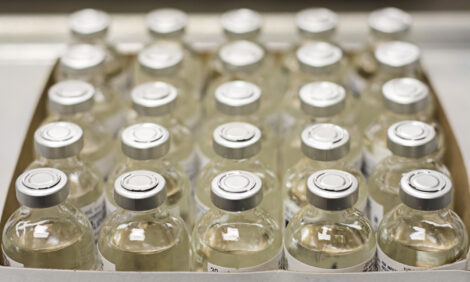



Brazil expects grain production to grow 27%, meat to grow 24% over next 10 years
According to a study, soybeans, second-crop corn and cotton should continue to drive growth
In relation to what the country produces in this season of 2020/2021, the increase in production until 2030/2031 should be 71 million tons, an increase of 27.1%, at a growth rate of 2.4% per year. Soybeans, second crop corn and cotton should continue to drive growth.
The numbers are from the study Projections of Agribusiness, Brazil 2020/21 to 2030/31 , carried out by the Secretariat of Agricultural Policy, of the Ministry of Agriculture, Livestock and Supply (Mapa), by the Secretariat of Intelligence and Strategic Relations, of the Brazilian Research Corporation Agriculture (Embrapa), and by the Department of Statistics, University of Brasília (UnB).
The domestic market, exports and productivity gains should be the main growth factors in the next decade, according to the study. The advancement of innovations must continue to permeate activities in the field, as there is great attraction for new technologies.
The production of meat (beef, pork and poultry) between 2020/21 and 2030/31 is expected to increase by 6.6 million tons, which represents an increase of 24.1%. Chicken and pork are the ones that should show the greatest growth in the coming years: chicken meat (27.7%) and pork (25.8%). Beef production should grow 17% between the base year and the end of the projections.
“These percentages may be at higher levels, given the increase in demand for animal protein,” warned José Garcia, general coordinator of Policy Assessment and Information, at the Ministry, and one of the researchers in the projections.

Featured regions
The Midwest and North regions are the ones that should have the biggest relative increases in production and area. Among the northern states, Tocantins and Rondônia should lead the expansion of production.
Among the large producers, Mato Grosso continues to lead the expansion of corn and soybean production in the country. The increase in corn production should occur especially due to the expansion of second-crop corn. But soy should show strong expansion in northern states, such as Tocantins, Rondônia and Pará. In Pará, production should grow at 4.8% per year; in Rondônia, 4.3%; and Tocantins, 3.2%. The attraction that culture presents and the opening of new modes of transport with the exit to the ports in the North contribute to this.
The region called Matopiba - formed by areas mainly of Cerrado in the states of Maranhão, Tocantins, Piauí and Bahia - should show a high increase in grain production. Projections indicate that it should produce around 36 million tons of grain in the next decade, in an area planted with grains of 9.3 million hectares at the end of the projection period.
Planted area
The planted area of grains should increase from the current 68.7 million hectares to 80.8 million hectares in 2030/31, an increase of 12.1 million hectares or 17.6% in relative terms. The planted area with all analyzed crops, in addition to grains, including sugar cane, coffee, cocoa and fruit, should increase from 80.8 million hectares in 2020/21 to 92.3 million in 2030/31.
This expansion is concentrated in soybean, sugarcane and corn hectares, which total 13.4 million additional hectares. Some crops, such as cassava, coffee, rice, oranges and beans, should lose area, but the reduction will be offset by productivity gains.
Products for export
The domestic market, together with exports and productivity gains, should be the main sources of growth in the next decade. In 2030/31, 33.7% of soy production should be destined for the domestic market; in corn, 71.6%; and in coffee, 43% of production must be consumed internally.
“There will thus be pressure on the increase in national production, due to the growth of the internal market and of the country's exports,” assessed Gasques.
In meat, there will be strong pressure from the international market, especially for beef and pork, although Brazil will continue to lead the international chicken market. Of the expected increase in chicken meat production, 71.4% of the 2030/31 production will be destined for the domestic market; of the beef produced, 64%; and in pork, 73.8%. Thus, although Brazil is, in general, a great exporter of these products, domestic consumption will remain very relevant.
The most dynamic products of Brazilian agribusiness should be cotton, soy and corn, pork, beef, chicken and fruit, especially mango.
"The domestic market and international demand will be the main growth factors for most of these products, which have the greatest potential for production growth in the next ten years," explained the research coordinator.









